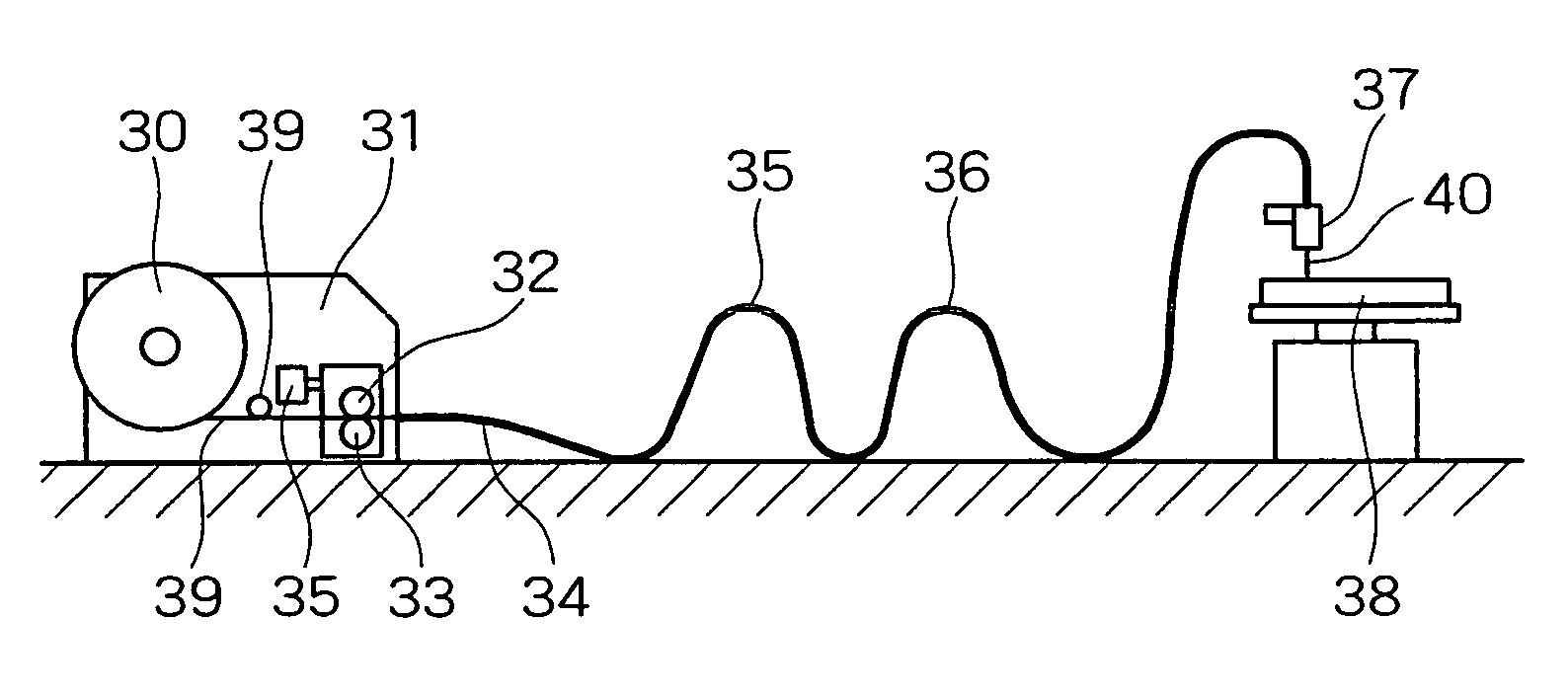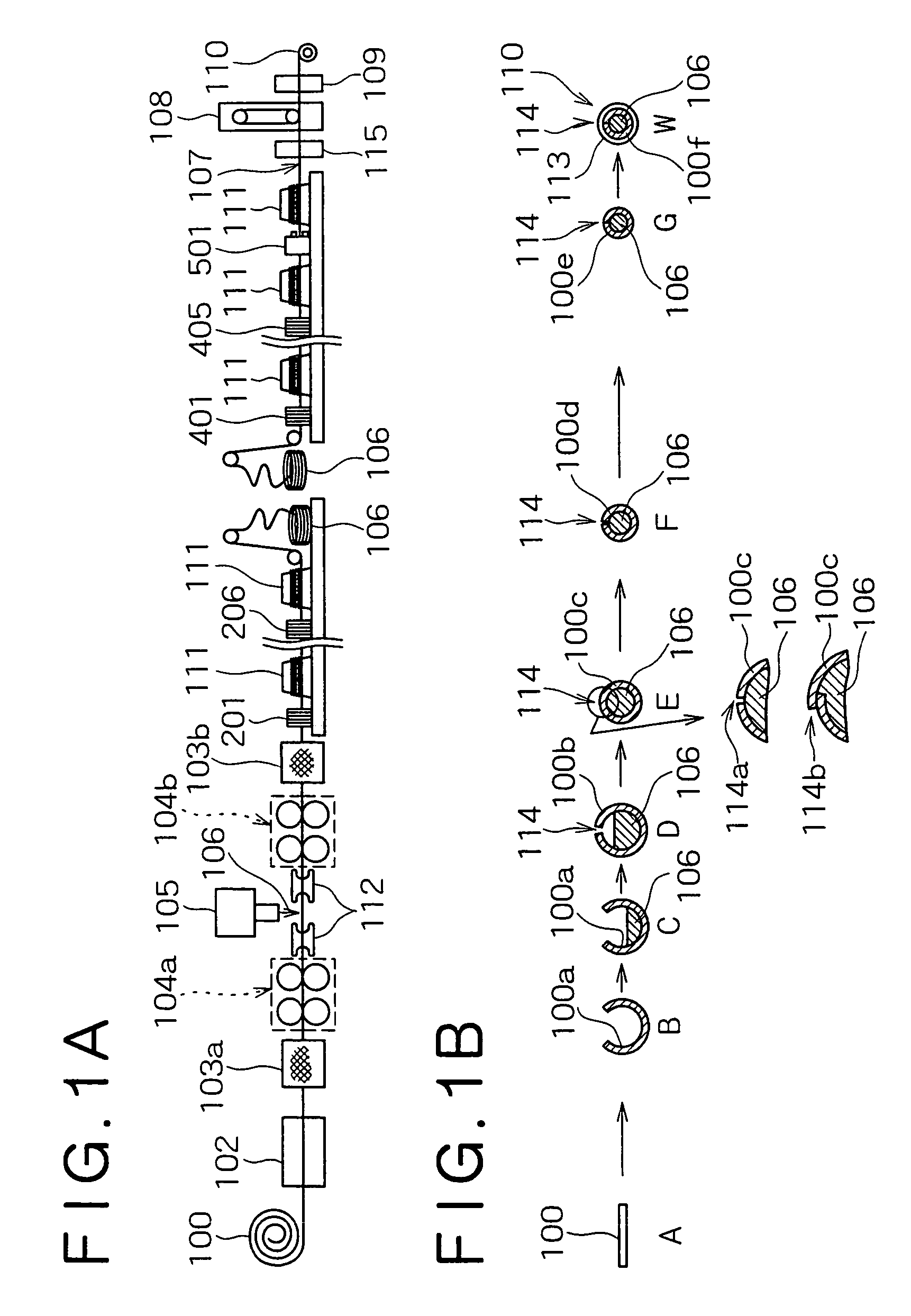Method for manufacturing seamed flux-cored welding wire
a technology of fluxcored welding wire and welding wire, which is applied in the direction of manufacturing tools, soldering devices, drawing dies, etc., can solve the problems of lubricant film breakage, large shear force on the surface of the lubricant layer, and welding defects, so as to reduce the amount of moisture or hydrogen, increase the speed, and reduce the amount of speed
- Summary
- Abstract
- Description
- Claims
- Application Information
AI Technical Summary
Benefits of technology
Problems solved by technology
Method used
Image
Examples
examples
[0117]Below, examples of the present invention will be described. In the FCW manufacturing process shown in FIG. 1A, FCWs with a product diameter of 1.2-mm were manufactured using the respective band steels (hoops) made of mild steel sheets of the components shown in Table 1, using the respective fluxes of the components shown in Table 2, and using the respective lubricants shown in Table 3. In this step, as shown in Tables 4 and 5, the ratio t / W of the thickness t to the width W of the band steel was variously changed (within the ranges of the width of 12 to 14 mm and the thickness of 0.85 to 1.4 mm), and the secondary wire drawing conditions were changed as shown in Tables 4 and 5, thereby manufacturing FCWs. Incidentally, Table 4 shows the inventive examples and Table 5 shows comparative examples.
[0118]Herein, as the environment for the production of the FCWs, the conditions disadvantageous to the prevention of the moisture absorption of each wire flux during drawing were selecte...
PUM
| Property | Measurement | Unit |
|---|---|---|
| surface temperature | aaaaa | aaaaa |
| diameter | aaaaa | aaaaa |
| length | aaaaa | aaaaa |
Abstract
Description
Claims
Application Information
 Login to View More
Login to View More - R&D
- Intellectual Property
- Life Sciences
- Materials
- Tech Scout
- Unparalleled Data Quality
- Higher Quality Content
- 60% Fewer Hallucinations
Browse by: Latest US Patents, China's latest patents, Technical Efficacy Thesaurus, Application Domain, Technology Topic, Popular Technical Reports.
© 2025 PatSnap. All rights reserved.Legal|Privacy policy|Modern Slavery Act Transparency Statement|Sitemap|About US| Contact US: help@patsnap.com



